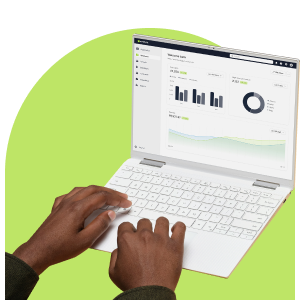Bulk emails are a proven means of building trust, showing customers you care, and driving growth for your business. But how do you measure the success of your bulk email campaigns? Is it by the number of sales? Well, that can be tricky to compare between campaigns, as each one is unique and external factors could also apply. Email marketing analytics, on the other hand, give you tangible data to help you understand how your recipients are receiving and responding to your bulk emails. This enables you to calculate engagement rates, so you can compare your bulk emails easily and effectively. Let’s take a deep dive into how email marketing analytics can ensure long-term bulk email marketing success.
Tools to Help Marketers Get Bulk Emails Right
Bulk email continues to be a dominant and growing medium for communication. This is why in our five-part blog post series, we present a bulk email crash course that’s packed with useful tips to bolster your campaigns, whether you’re an email marketing newbie or old hand. You can read the blog posts as a series or individually, and we encourage you to refer to them time and again for top bulk email results.
We kicked off by explaining what bulk emails are used for, how they can make an impact, and what it takes to make them engaging. Next, we shared tactics to help you build subscriber lists, maintain compliant contact databases, and practice list hygiene – and why it’s essential to do so.
We also detailed three powerful ways to boost bulk email campaigns by using A/B split tests, autoresponders and workflows, and landing pages. Then, we gave you top design tips anyone can implement in their bulk email campaigns to ensure they’re eye-catching and impactful.
To close out the series, we tackle the somewhat tricky subject of how to measure your bulk email campaign success. We’ll share tools that will help you understand what makes your emails effective and explain why deliverability is an essential consideration for your campaigns.
Why a Spray and Pray Approach Doesn’t Work
With millions of emails sent around the world every minute, inboxes are crowded. So, how do you ensure your bulk emails stand out? Well, it’s definitely not by sending the same standardised and vanilla email to all your recipients.
This approach is often referred to as spray and pray, whereby you send one bulk email to many and hope it will resonate with all your recipients.
Bulk emails can – and should – be utilised in much more sophisticated ways to help you target your messaging for recipients and drive your desired results.
Bulk email providers, like Everlytic, give you so many options to create custom messaging that can be automated and sent at scale. This ensures you send hyper-personalised bulk emails to your recipients and focus on each of their specific interests without having to send each email individually. To do this successfully requires collecting valuable contact data, such as your recipients’ names, contact details, and interests.
Once you are in a position to send targeted and strategic bulk emails, it’s important to constantly monitor how they are received and refine what works best.
We’ve already shared how you can use A/B split tests to determine which version of your mailer a few of your recipients respond to best before sending the top choice to the rest of your database. This is one way to understand what your recipients want to receive in your mailers. But, there’s a deeper way to analyse and assess what works. It’s by using email marketing analytics.
It’s official: the spray and pray approach to email marketing is just not going to cut it. This was determined in Everlytic’s You Mailed It Email Marketing Awards 2024.
Why You Should Use Analytics to Measure Your Bulk Emails
In a bid to use marketing analytics to measure your campaigns, you’ll need to have access to a bulk email marketing service provider that can give you statistics on how each email performed. On our Everlytic platform, you can view detailed reports to learn insights about how your recipients received your email.
You may wonder what the point in learning how an email performed is, when your next mailer may be completely different. The crux is, your content may differ, but your audience is the same, and analysing how your recipients respond to each email will give you insight into what they respond to well and reproduce that in your next emails.
By considering when your recipients are more responsive to opening emails, where they click in your emails, and how they respond to different calls to action, you can ensure you consistently serve them with the content they enjoy and in the ways they respond best.
Insights You Need to Make Data-Backed Decisions
Basic Engagement Stats
- Opens: the number of times an email was opened.
- Unique Opens: one count per contact who opens the email.
- Clicks: total number of link clicks in your email.
- Unique Clicks: one count per contact per link.
- Total Clicks: total link clicks, including duplicates.
You can take these stats further to calculate open and click-through rates.
- Open Rate: % of recipients who opened the email.
- Click-Through Rate: % of recipients who clicked at least one link.
Rich Engagement Stats
These help determine the click-to-open rate and long-term engagement over three months.
Delivery Stats
Shows emails sent, delivered, bounced, forwarded, and unsubscribes.
Social Sharing
Percentage of recipients who shared the email on social platforms.
Heatmaps
Reveals which links were clicked and the best layout positions. If you find clicks are only at the top, consider inverted pyramid structures.
Attachment Downloads
Tracks how many attachments were downloaded and by whom.
Devices Used
Shows which devices and browsers recipients used. This supports using responsive templates.
Geo Report
Displays recipient locations to help you tailor future content.
Email marketers spend a lot of time considering what to say and how best to present their messages to boost their engagement rates. Another important consideration is when to send your emails. Get a blueprint for the best day to send your email newsletter across four industries.
Why Deliverability Is Vital for Bulk Email Success
Since the purpose of your emails is to ensure they land in your recipients’ inboxes, achieving a high delivery rate is likely the most important marketing analytic. However, this is not always as straightforward as it seems.
This is because after you hit send to your contact list, your bulk email goes through a complex process of checks to ensure it is legitimate and not spam.
In the beginning of 2024, Google and Yahoo implemented changes requiring extra verification for high-volume senders. This helps filter out spam and phishing.
To meet these requirements, you must adopt SPF, DKIM, and DMARC protocols. A one-click unsubscribe and a spam rate below 0.3% are also needed.
Get all the info you need to ensure you are recognised as a legitimate bulk email sender in our Bulk Email Delivery Survival Guide.
Data-Driven Insights Are Key for Bulk Email Performance
Getting email marketing right takes strategy and tact. A spray and pray approach is not effective when sending your bulk emails, as your recipients want to receive messaging that’s specific to their needs and interests. It’s also unhelpful to simply send your emails without understanding how your audience is receiving them. This is where email marketing analytics come in. Examining how your recipients interact with your emails will give you data-driven insights to tailor your bulk emails in ways your recipients will respond to them best.
Back-Up Your Bulk Email Strategy with Stats
Of course, in a bid to analyse how your bulk emails perform, you need to use a platform with marketing analytics capabilities. Everlytic is your one-stop bulk communication platform that will help you to not only send bulk emails but analyse how they perform too.



